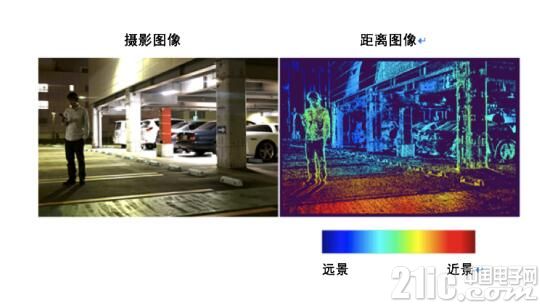Recently, Toshiba has successfully developed a photographic technology that can simultaneously acquire color images and distance images by shooting with a single-lens reflex camera. Through the combination of new lens design and image processing technology, it achieves high-precision distance detection comparable to stereo cameras. The technology was officially released on June 8, 2016 at the 22nd "SSII2016 Image Sensing Exchange Conference" held in Yokohama, Japan.
This article refers to the address: http://
In recent years, more and more vehicles have begun to carry multiple cameras or sensors on the front, rear and side, and have achieved rapid development in the field of driving assistance such as autonomous driving. At the same time, based on the remote control of drones and robots. Facility maintenance is becoming more prevalent, and image sensors on these devices are playing an increasingly important role. However, in addition to shooting a normal two-dimensional image, it is sometimes necessary to grasp the dynamic three-dimensional space such as the shape, movement, and distance of the object.
Up to now, people have developed a variety of distance measurement techniques such as stereo camera note 1, infrared depth sensor note 2, ultrasonic sensor note 3, millimeter wave radar note 4, LiDAR note 5, SfM technology note 6. However, taking a stereo camera as an example, in order to obtain high-precision measurement results, it is necessary to set the pitch of the two cameras to about 30 cm, which is disadvantageous for miniaturization of the device. In addition, the infrared depth sensor and the ultrasonic sensor respectively need to irradiate the target object with an infrared pattern and an ultrasonic wave, and it is impossible to measure an object having a distance of several tens of meters. Millimeter wave radar and LiDAR are not only costly, but also difficult to achieve miniaturization. In addition, the SfM technology, because it is necessary to move the camera for shooting, and then measure the distance through multiple images, it is difficult to ensure the accuracy of the distance detection for moving objects.
In summary, the various distance sensors of the prior art have advantages and disadvantages, and it is difficult to achieve high-precision distance detection on the basis of miniaturization and low cost.
To this end, Toshiba has developed a photo technology that combines color filters and image processing developed independently to capture color images and high-precision distance images from a single SLR camera. Specifically, Toshiba's unique color open filter consisting of blue and yellow lenses is attached to the opening of the front end of the lens to form a blur and color shift according to the distance from the object, and then analyze the The blur and color shift obtained in the photographic image can detect the distance between each pixel and the object. Such a color filter can effectively suppress deterioration of image quality by transmitting green light which is advantageous for improving brightness. The results of testing with a commercially available camera show that the image taken by the SLR camera can achieve a distance accuracy comparable to that of a stereo camera with a camera pitch of 35 cm. This technology combines lens and image processing, even when using a normal image sensor.

In the future, Toshiba will continue to promote the miniaturization of camera miniaturization and image processing, and strive to realize the practical application of new technologies as soon as possible.
(Note 1) Shoot with two cameras and measure the distance using triangulation.
(Note 2) Irradiation of the infrared pattern is performed using an infrared camera, and the distance is detected based on the offset of the infrared pattern.
(Note 3) The ultrasonic wave is transmitted, and the distance is detected based on the reception time of the reflected wave.
(Note 4) A millimeter wave is emitted, and the distance is detected based on the reception time of the reflected wave.
(Note 5) Light Detection and Ranging Irradiates the laser and detects the distance based on the reception time of the reflected wave.
(Note 6) Structure from Motion Take a picture with a moving camera and calculate the distance based on images from multiple angles.
There are some draft products here, which will not be displayed on the website. These products can be modified later to enrich the content of the website. If you want to know more about our company, you can go to our website to check, there will be what you want, or you can consult us. Nice to meet you and looking forward to our cooperation.
Draft-waiting For Releasing,Draft-waiting For Releasing,Draft-waiting For Releasing
ETOP WIREHARNESS LIMITED , https://www.wireharnessetop.com
